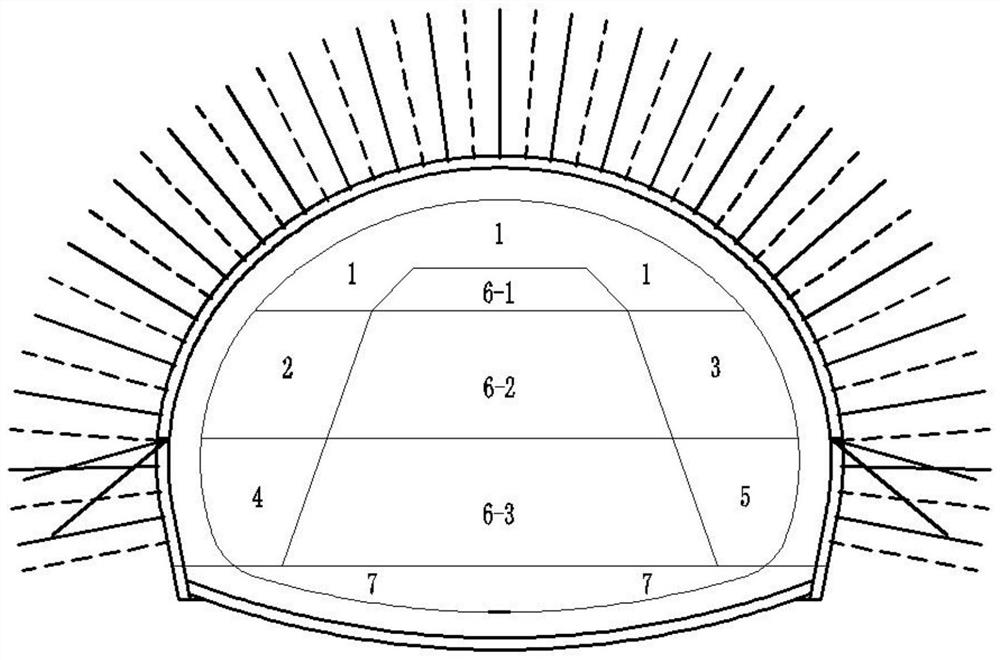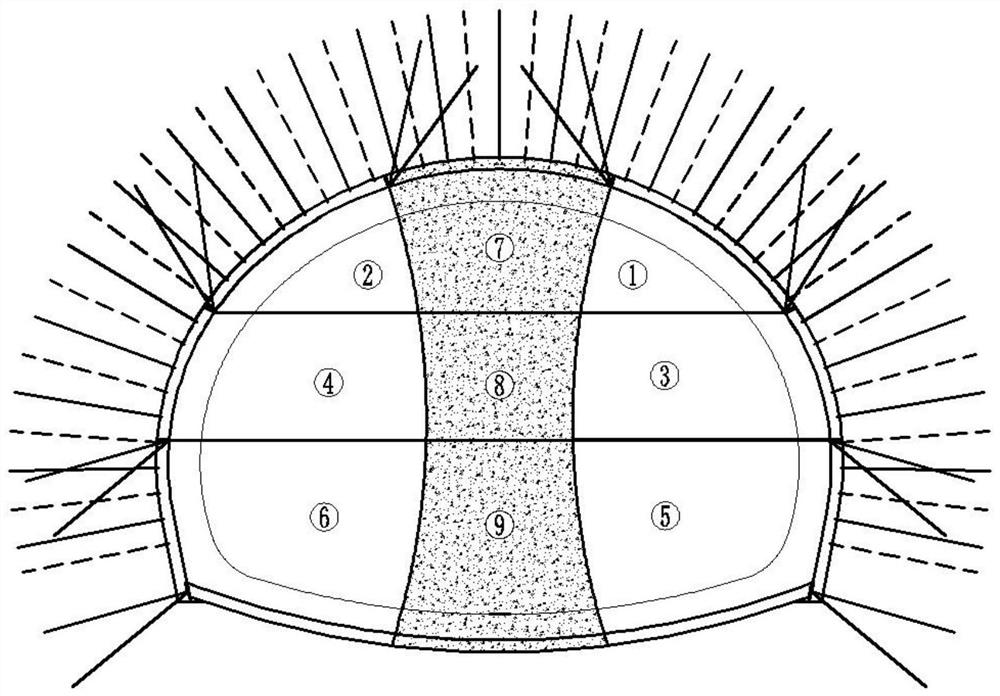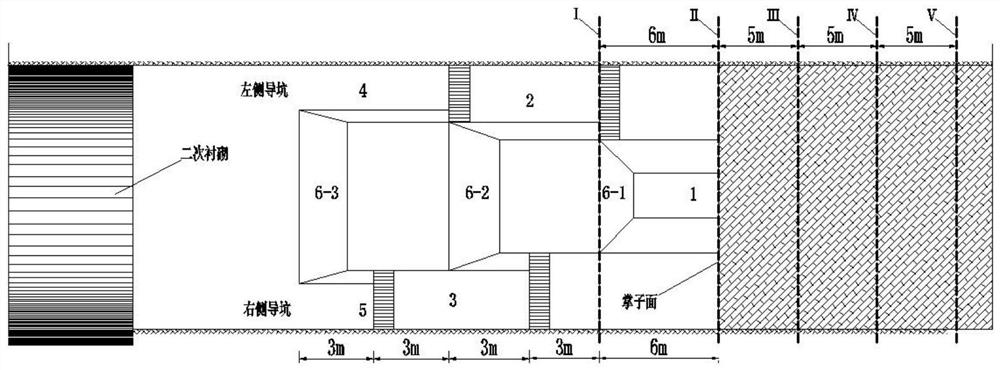The Construction Method of Transitioning from the Three Steps and Seven Steps Method to the Middle Rock Pillar Method in Super-large Section Tunnel
A technology with super-large section and construction method, which is applied in tunnels, tunnel linings, earthwork drilling and mining, etc., can solve the problems of many excavation divisions, small pilot pits, and many surrounding rock disturbances, so as to reduce the construction progress and control the surrounding rocks Deformation, the effect of ensuring construction safety
- Summary
- Abstract
- Description
- Claims
- Application Information
AI Technical Summary
Problems solved by technology
Method used
Image
Examples
Embodiment Construction
[0028] The present invention will be further described below in conjunction with the accompanying drawings and embodiments, but not as a basis for limiting the present invention.
[0029] Embodiment of the present invention: a construction method for converting from the three-step seven-step method to the middle rock pillar method for a super-large-section tunnel, as shown in the attached Figure 1-6 As shown, first use the existing three-step seven-step method to excavate to the weak stratum, that is, the excavation area to be converted, and start the construction method conversion, and then use the middle rock pillar method to divide the excavation area to be converted, and divide in turn It is the pilot pit on the left and right sides and the middle rock pillar. During the process of advancing and changing the construction method, the pilot pit on the left and right sides still continues to advance with the three-step method. During the excavation process, the right pilot pi...
PUM
 Login to View More
Login to View More Abstract
Description
Claims
Application Information
 Login to View More
Login to View More - R&D
- Intellectual Property
- Life Sciences
- Materials
- Tech Scout
- Unparalleled Data Quality
- Higher Quality Content
- 60% Fewer Hallucinations
Browse by: Latest US Patents, China's latest patents, Technical Efficacy Thesaurus, Application Domain, Technology Topic, Popular Technical Reports.
© 2025 PatSnap. All rights reserved.Legal|Privacy policy|Modern Slavery Act Transparency Statement|Sitemap|About US| Contact US: help@patsnap.com



